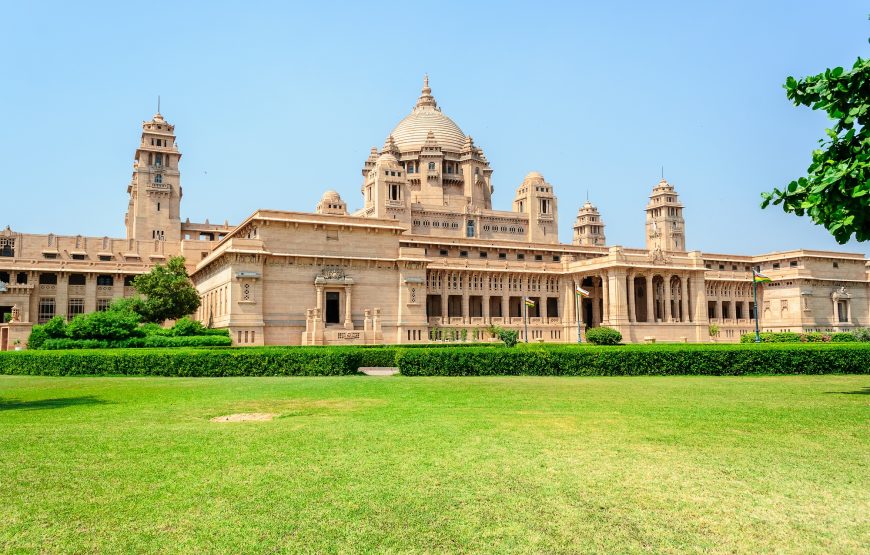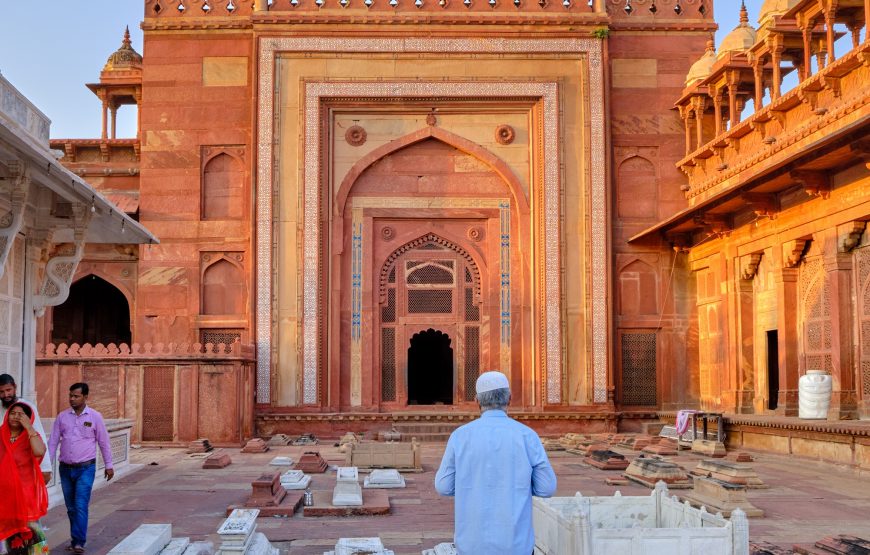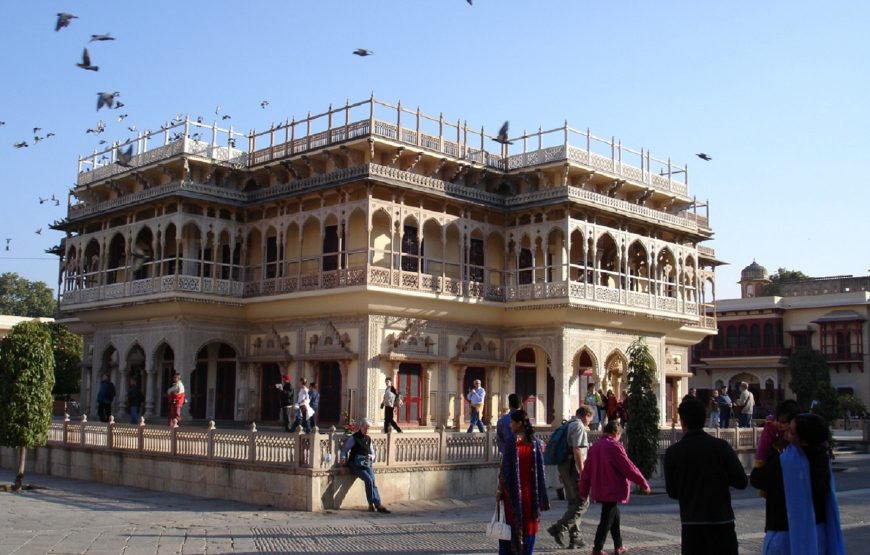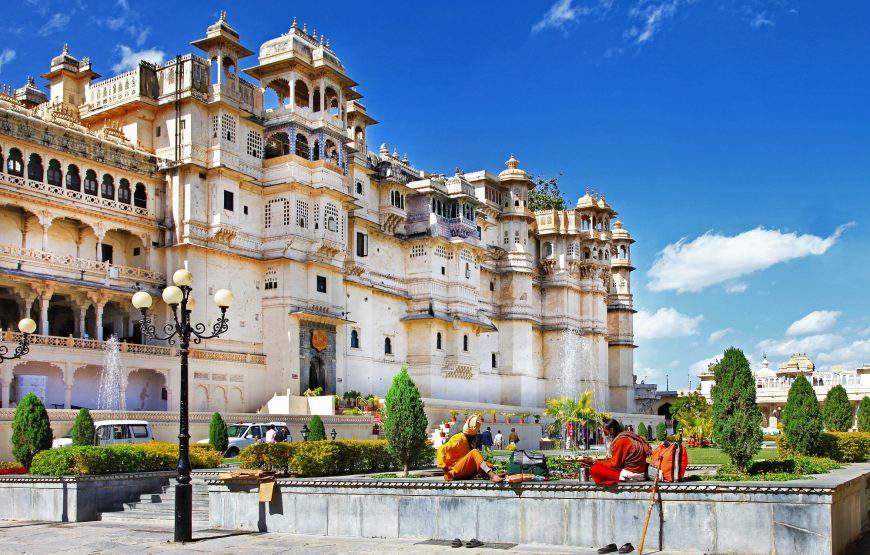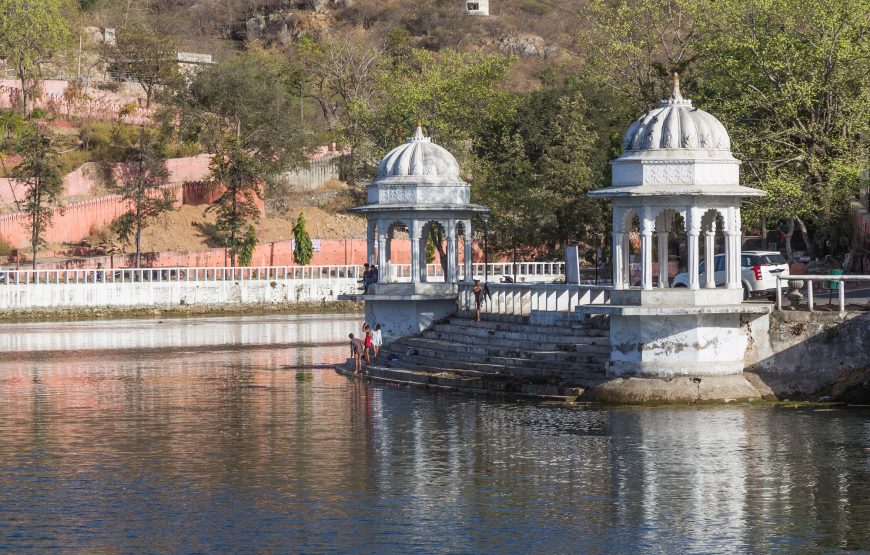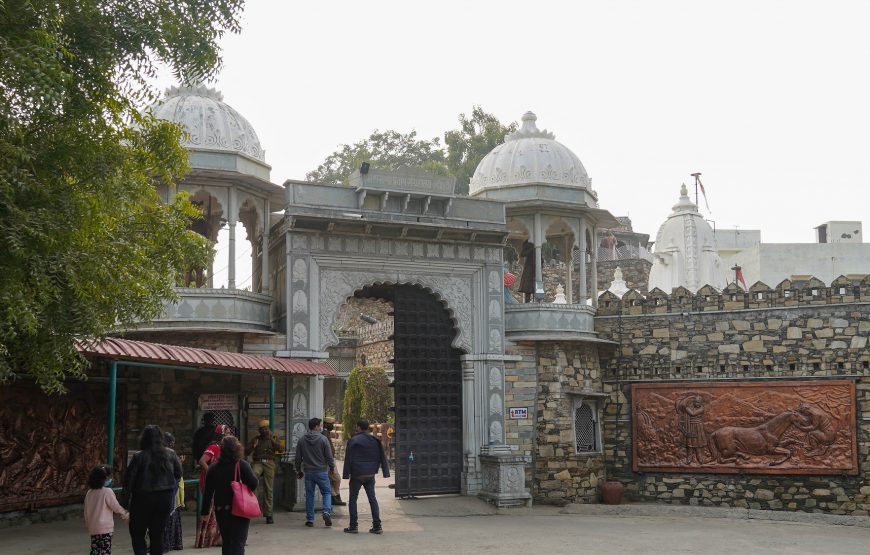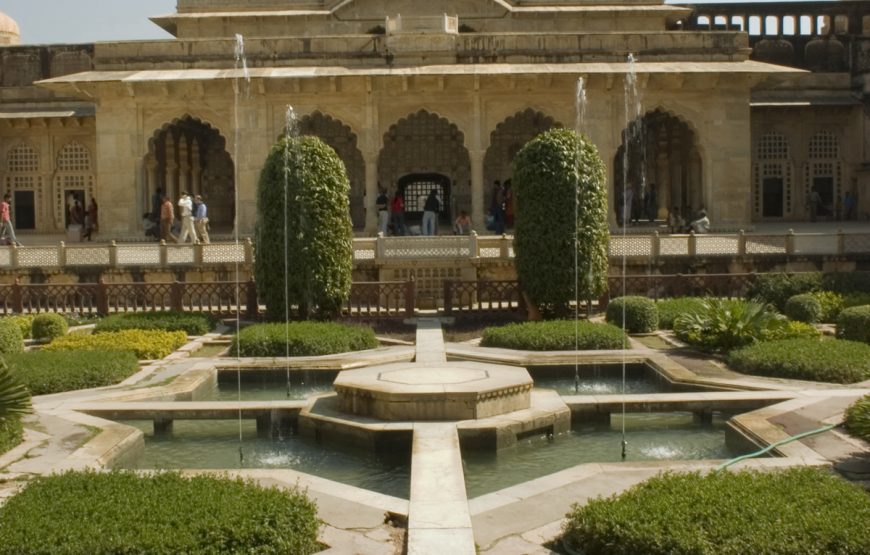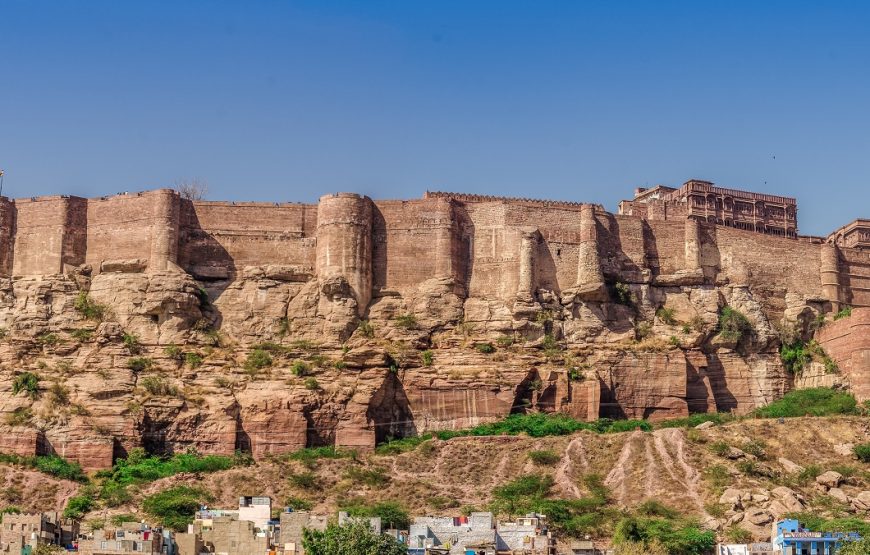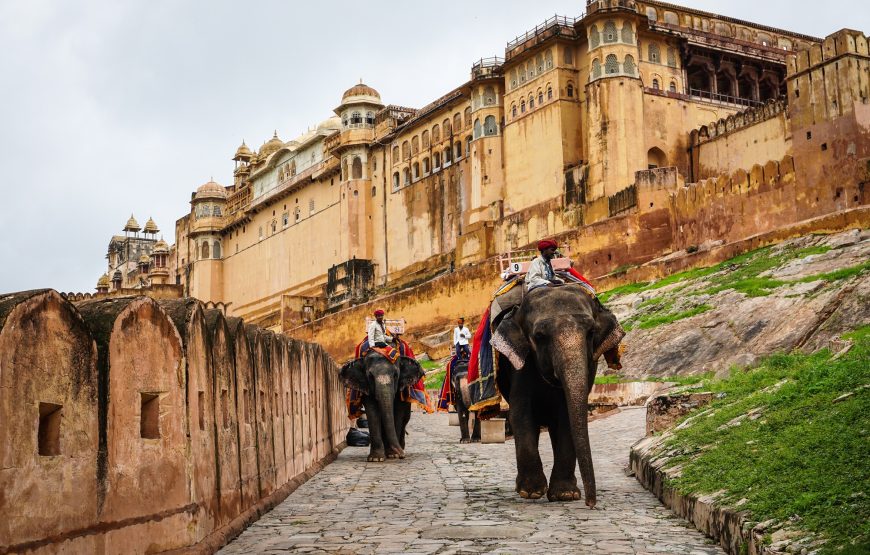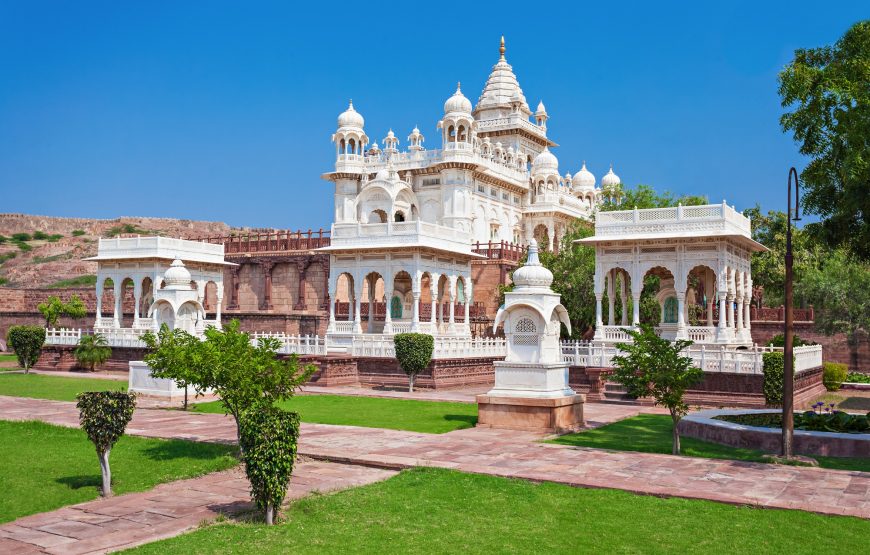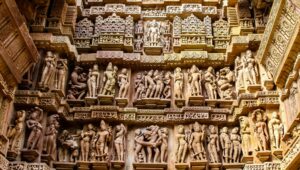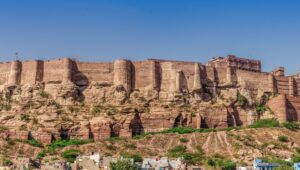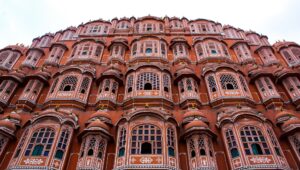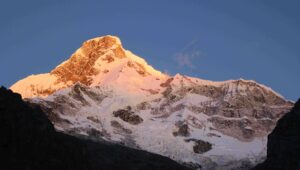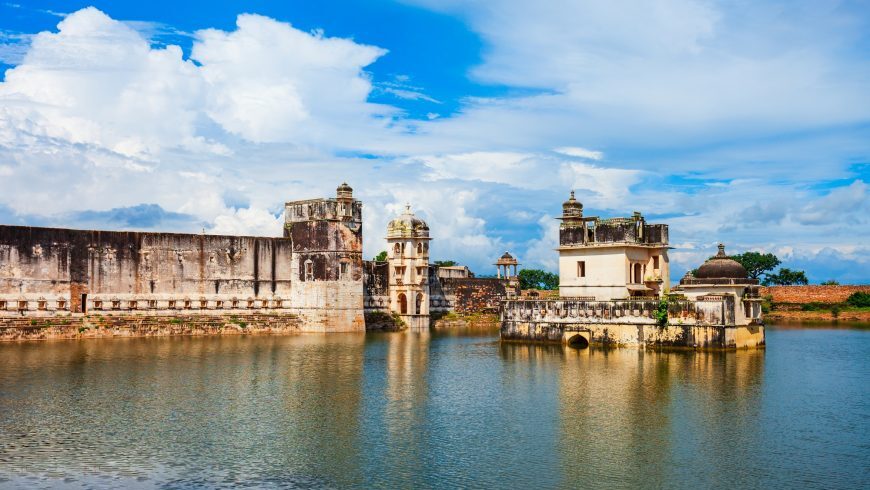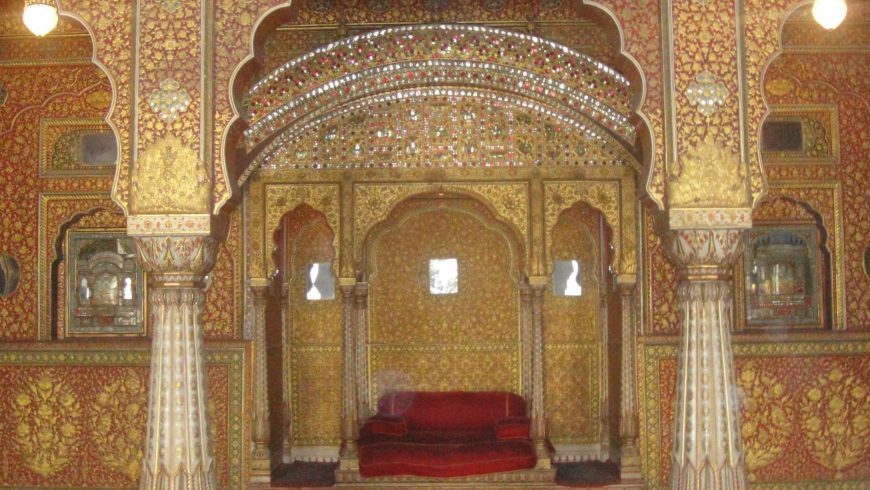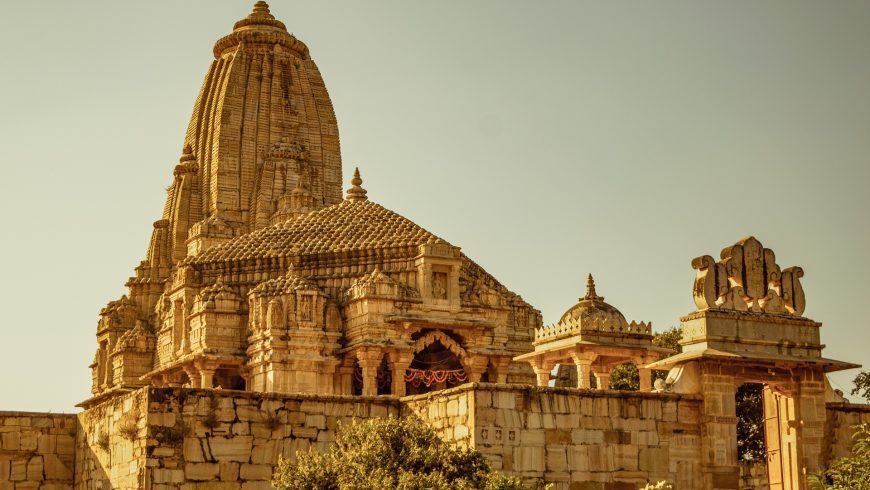Overview
Explore the top attractions of Rajasthan on an 8-day tour that begins in Delhi and ends in Udaipur. Travel through Agra, Jaipur, Pushkar, and Jodhpur, and visit the important monuments including UNESCO World Heritage-listed sites such as the Red Fort and Jama Masjid in Delhi, the Taj Mahal and Agra Fort in Agra, and the Amber Fort and Fatehpur Sikri in Jaipur.
Itinerary
Day 1 :
Arrive in Delhi
Arrive in Delhi, and meet the representative.
Transfer to the hotel.
Overnight stay in Delhi Hotel.
Day 2 :
Delhi Sightseeing
Visit the Red Fort Shah Jahan constructed Red Fort in 1939, and it was the main residence of the Mughal Dynasty. It is located in the city center. It is made from red sandstone, and that is where it gets its name from. It became a UNESCO World Heritage Site in 2007.
See Qutub Minar, which is a five-story tapering tower with a height of 73 meters. The spiral staircase in this minaret has 379 staircases. It is a UNESCO World Heritage Site and visited by many every day.
Go to India Gate; it is a war memorial located near the Rajpath. It is dedicated to the soldiers of British India who died in the wars. The India Gate, even though a war memorial, evokes the architectural style.
Head to the Lotus Temple, famous for its flower-like shape; Lotus Temple is a house of worship and open to all. Winning numerous awards, this place is a prominent attraction for all.
Stop by Raj Ghat, a memorial dedicated to Mahatama Gandi; Raj Ghat is situated in Delhi. It is a black marble open to the sky and a flame that eternal burns at one end. It is a great place to learn more about the history of the country.
Continue to Jama Masjid, one of the largest mosques in the country; Jama Masjid is made up of red sandstone and marble. It was constructed by Shah Jahan and is visited by hundreds of people every day. The mosque's courtyard can accommodate about 25,000 people and be built for about one million Indian Rupees.
Enter Humayun's Tomb, which is the tomb of the Mughal Emperor Humayun in Delhi, India. The tomb was commissioned by Humayun's first wife and chief consort, Empress Bega Begum, in 1558 and designed by Mirak Mirza Ghiyas and his son, Sayyid Muhammad.
Stroll in the streets of Chandni Chowk or take a cycle rickshaw ride in Chandni chowk & Khari Baoli Spice Market, a busy shopping area with markets full of spices, dried fruit, silver jewellery, and vivid saris. In contrast, the narrow side streets are crowded with tiny shops selling essential oils, stationery, and traditional Indian sweets.
Overnight stay in Delhi Hotel.
Day 3 :
New Delhi To Agra
Visit the Taj Mahal, an ivory-white marble mausoleum on the southern bank of the river Yamuna in the Indian city of Agra. It was commissioned in 1632 by the Mughal emperor Shah Jahan to house the tomb of his favourite wife, Mumtaz Mahal; it also houses the tomb of Shah Jahan himself.
Head to the Agra Fort, a historical fort in the city of Agra in India. It was the main residence of the emperors of the Mughal Dynasty until 1638, when the capital was shifted from Agra to Delhi. Before capture by the British, the last Indian rulers to have occupied it were the Marathas.
In the evening visit the old Agra Market on your own.
Overnight stay in Agra Hotel.
Day 4 :
Agra To Jaipur
Visit Fatehpur Sikri is a small city in northern India, just west of Agra, founded by a 16th-century Mughal emperor. Red sandstone buildings cluster at their center. Buland Darwaza gate is the entrance to Jama Masjid mosque. Nearby is the marble Tomb of Salim Chishti. Diwan-E-Khas hall has a carved central pillar. Jodha Bai's Palace is a mix of Hindu and Mughal styles.
Head to the Chand Baori built during the 8th and 9th centuries and has 3,500 narrow steps arranged in perfect symmetry, which descend 20m to the bottom of the well.
Stop by Johari Bazaar, a shopper's paradise and a must-visit, Johari Bazaar in Jaipur have a reputation that precedes itself. Located near Hawa Mahal, this market of exquisite jewellery and artifacts to choose from can immerse shoppers in its glittering glory. It is considered to be one of the oldest markets in Jaipur City.
Continue to Hawa Mahal, also known as The Palace of Winds, is made with red and pink sandstone, distinguishing from the surroundings. The palace is a five-story pyramidal-shaped monument and was built by Sawai Pratap Singh in 1799.
After the visit to Hawa Mahal, return to the hotel.
Overnight Stay in Jaipur Hotel.
Day 5 :
Jaipur Sightseeing
Visit Amber Fort, situated at the top of the hill. Amber Fort is located in Amer. It was built by Raja Man Singh I. It is known for its artistic elements. The Maota Lake located in front of the monument acts as a source of water for the fort.
Go to the City Palace, spend one hour exploring Maharaja’s City Palace. The City Palace of Jaipur was originally the administrative and ceremonial seat of Maharaja of Jaipur, constructed in 1721. It was also the location of religious and cultural events that took place at that time. It now houses the Maharaja Sawai Man Singh II Museum and continues to be the home of the Jaipur royal family.
Head towards Jal Mahal, a palace floating on Man Sagar Lake, for a photo opportunity. Jal Mahal is a palace located in the middle of Man Sagar Lake in the city of Jaipur. The palace and the lake around it were renovated and enlarged in the 18th century by Maharaja Jai Singh II of Amber. The palace and scenic beauty of the lake attract various tourists.
Move towards Jantar Mantar, which is a UNESCO World Heritage site built in 1734. It is a collection of nineteen architectural astronomical instruments built by the Rajput king Sawai Jai Singh II, the founder of Jaipur. The instruments allow the observation of astronomical positions with the naked eye.
Rest of the time free for leisure.
Overnight stay in Jaipur Hotel.
Day 6 :
Jaipur To Jodhpur
Visit Brahma Temple and enjoy the walk around the Holy Lake of Pushkar.
Head to Mehrangarh Fort, the 5 km long majestic fort on 125 m high hill is one of the most impressive & formidable structures. Although invincible from the outside, the fort has four gates approached by a winding road. Within the fort are some magnificent palaces with marvellously carved panels, latticed windows, and evocative names. These are the Moti Mahal, Phool Mahal, Sheesh Mahal, Sileh Khana & Daulat Khana. These Palaces house a fabulous collection of trappings of Indian royalty, including a superb collection of palanquins, elephant howdahs, miniature paintings of various schools, musical instruments, costumes.
Continue to Jaswant Thada; the imposing white marble memorial marks the site of the royal crematorium. It houses portraits of successive rulers. The four cenotaphs around here commemorate notable acts of bravery and generosity of the four successive rulers.
See the Ghanta Ghar or the Clock Tower, a prominent landmark in Jodhpur; it was built by Maharaja Sardar Singh between 1880 and 1911.
Over-night stay at Jodhpur Hotel.
Day 7 :
Jodhpur To Udaipur
Have breakfast at the hotel and drive to Udaipur.
Enroute visit Ranakpur Jain Temple. The Ranakpur Temple complex comprises 1444 intricately carved pillars, 24 pillared halls accompanied by 80 domes which are borne by 400 columns. The apogee of this entire temple architecture is the fact that no two pillars in here are the same.
In the evening, check-in at Udaipur Hotel.
Enjoy a boat cruise on Lake Pichola, see the ghats along the lake and the interesting buildings on the banks. The view of the city palace from the lake is spectacular.
Overnight stay at Udaipur hotel.
Day 8 :
Udaipur Sightseeing
See the City Palace, which is a palace complex situated in the city of Udaipur. It was built over a period of nearly 400 years, with contributions from several rulers of the Mewar dynasty.
Visit the Saheliyon Ki Bari, which was laid for a group of forty-eight maidens. This garden is located on the banks of the Fateh Sagar Lake, presenting a green retreat in the drylands of Rajasthan. It was built from 1710 to 1734 by Maharana Sangram Singh for the royal ladies.
Watch the "Dharohar" folk dance show at Bagore-ki-Haveli. A gorgeous 18th-century haveli that has been converted into a museum showcasing Mewar art and architecture. The haveli puts on one of the best Rajasthani folk dance shows in Rajasthan. For an hour, performers dance to Rajasthani folk music wearing bright coloured ethnic dresses. The dances are varied and demonstrate the tradition and culture of Rajasthani folklore.
In the late evening, guests will be dropped at Udaipur Railway Station for Delhi Train.
Include
- Breakfast
- Private Transport
- Camel Safari
- Jeep Safari
- Sightseeing
- Pick up & Drop
- Hotel Accommodation
- 1 Night in Desert Accommodation & Gala Dinner
- Toll Tax, Parking Fuel etc
- Train Ticket for Udaipur to Delhi on 8th Day
Excludes
- Lunch/Dinner
- Any Type of Monuments Charge
- Any Type of Drinks
- Personal Expenses
